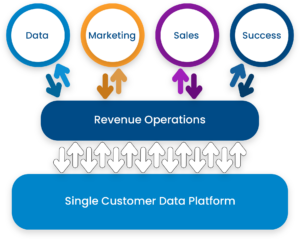Supplier Toyota Boshoku plans new products for robotaxis
The enterprise was launched as textile maker Toyoda Boshoku Corp. in 1918 by Sakichi Toyoda, great-grandfather of Toyota Motor President Akio Toyoda. It changed the “d” in its company title to a “t” in 2004. Now, it ranks No. 27 on Automotive News‘ list of the major 100 worldwide suppliers, with world gross sales of $9.33 billion in 2021.
Its new organization prepare counts on assembly rising desire for journey-hailing and robotaxi fleets. The method is partially modeled on the airline company. A carrier’s jetliners previous quite a few decades, but the seats and interiors of people planes are consistently refurbished or upgraded.
Consider of a plane’s enhance for plusher seats, semiprivate high quality-class pods, newly outfitted video clip shows or even nicer toilets. Boshoku has been giving interiors to the airline marketplace for decades. In aerospace, Chung notes, a plane stays in operation for 25 several years — acquiring a new interior each individual 6 several years or so. Toyota Boshoku would like to transfer that model to fleets on the floor.
Experience-hailing and robotaxis will account for almost 40 per cent of the mobility market by 2030, when Amount 3 and Level 4 automatic driving develop into commonplace, Toyota Boshoku predicts. Owned or leased automobiles, by distinction, must make up about 30 p.c of the current market.
By 2050, it forecasts an even additional remarkable change, with Degree 5 robotaxis building up 80 p.c.
The outlook is a total flip from the distribute nowadays. Ride-hailing accounts for a minor much more than 10 p.c now, when robotaxis are nonetheless in improvement. Personal autos hold practically 80 percent.
But futuristic fleet operators are presently organizing their initial moves. Chinese ride-hailing large Didi eyes 1 million robotaxis in 2030. In Texas, Toyota Motor and Aurora Innovation Inc. are screening an autonomous experience-hailing fleet.
Meanwhile, Cruise and Waymo have gained permits to start professional autonomous vehicle expert services in California. Cruise said the approval tends to make it the to start with organization providing a “driverless” commercial journey-hailing provider — found as a vital phase toward a future of robotaxis.
All this movement will spur automakers to make cars to fill those people fleets. Individuals this kind of as Kia Corp. are earning these types of function-constructed vehicles a pillar of their long run enlargement programs.
“The financial product is shifting toward that,” Chung mentioned. “We are certain that shoppers will appear for merchandise or providers that will give them extra time conserving, much more comfort, extra house, a lot more privacy, extra effectively-getting and a far better user knowledge.”
By Chung’s estimates, present-day human taxi driver averages 35,000 miles a calendar year, on eight-hour shifts. Degree 4 autonomous robotaxis, even so, could run 20 hours a working day, racking up as many as 87,000 miles a calendar year — or about 522,000 miles over the robotaxi’s expected 6-calendar year lifetime span.
That equates to a whole lot of don and tear. Suggests Chung: “They will likely want to transform the interiors typically because they will be used and abused.”
Toyota Boshoku strategies to push quantity by marketing distinctive sets of interiors for every vehicle, this sort of as overall economy, economic system as well as, premium and bespoke. This will allow the operator to reconfigure the pod to the consumer demands of the working day.
That volume would appear on prime of standard servicing and replacement of pieces.
Simply set, Boshoku sees a brighter foreseeable future in pod cars and trucks, many thanks to rapid turnover.
“Right now, around the lifetime of a vehicle, you’re just stuck with just one established and just use it right up until the end of the everyday living cycle. In this situation, you can have different retrofits,” Chung said.
“For us, profits will maximize for the reason that for each car or truck, we are going to market at the very least 4 different modules plus the replacements,” Chung said. “We want to create new demand from customers.”
Remaining tethered to Toyota Motor has its rewards in a confirmed earnings stream.
But Toyota Boshoku will get a lopsided 90 % of its revenue from Toyota. It wagers that if it can take the lead in interiors for long run mobility, it can grow its shopper foundation beyond Toyota Motor to other automakers and fleet purveyors.
A diversified gross sales base will never just advantage Toyota Boshoku it will support Toyota Motor by supplying it a much better provider network.
“We want to be a company that grows even even further, even with new shoppers or new segments,” Chung claimed. “We want to be a organization that establishes its very own destiny.”








